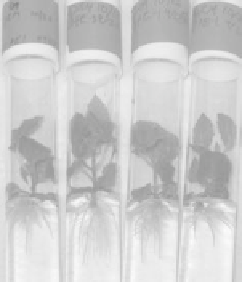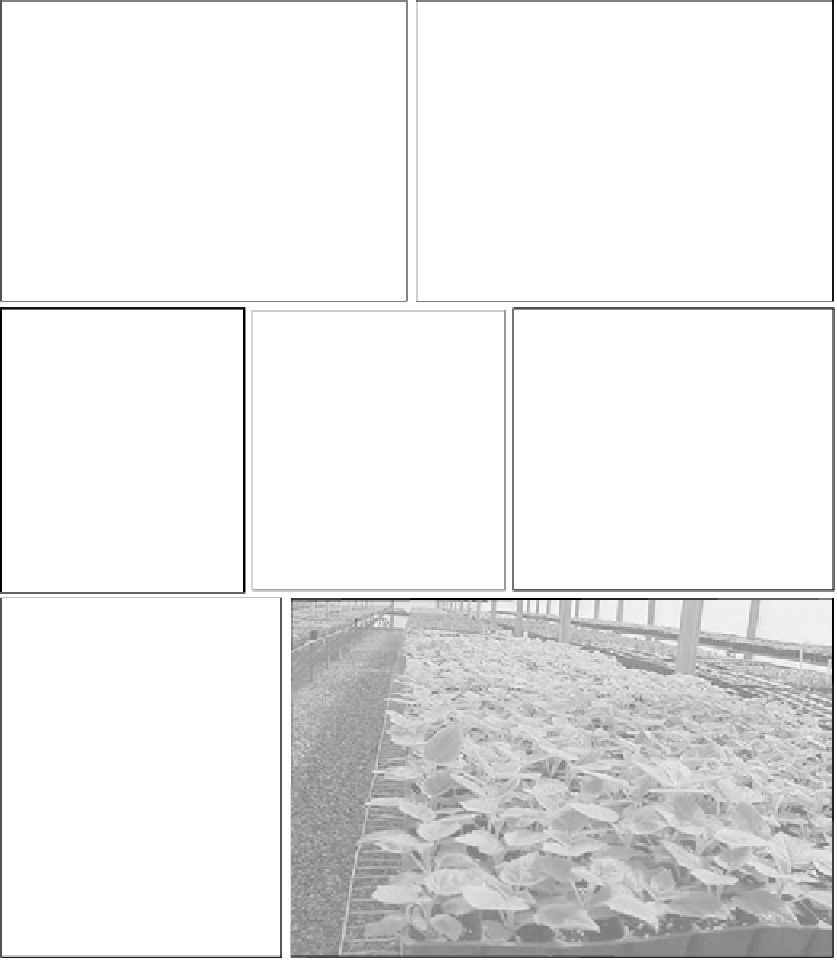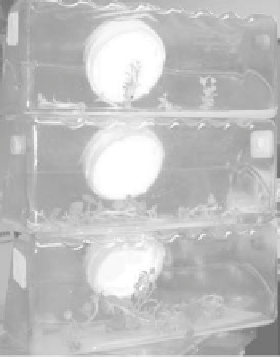Environmental Engineering Reference
In-Depth Information
(a)
(b)
(c)
(d)
(e)
(f)
(g)
FIGure 27.2 (see color insert)
Steps in the micropropagation of
P. elongata
.
(a) Use of nodal explant for
multiple shoot induction. (b) Commercial in vitro production at WPI. Each container has 30 rooted plantlets.
(c) Elongated shoots can be easily rooted in the presence of 1 mg/L indole butyric acid supplemented in the
medium. (d) Leaf with petiole can also be used for developing multiple shoots through an intervening callus
phase. (e) Shoot tips also produced multiple shoots. (f) The “Liquid Lab Rocker” system has been found to
be useful in our laboratory for rapid multiplication and reduction in the cost of production. (g) Acclimatized
uniform planting stock in the greenhouse.
casein hydrolysate, 100 mg/L myo-inositol, 2 mg/L thiamine, 5 mg/L nicotinic acid, 2 mg/L
adenine, and 10 mg/L pantothenic acid. Repeating this media formulation on another four species
of Paulownia did not yield any positive results (Yang et al. 1996), suggesting that strong genotypic
factors are in play. Callus induced on fertilized ovular explants showed a persistent embryogenic
capacity, eventually differentiating into plantlets. Direct and indirect somatic embryogenesis have







